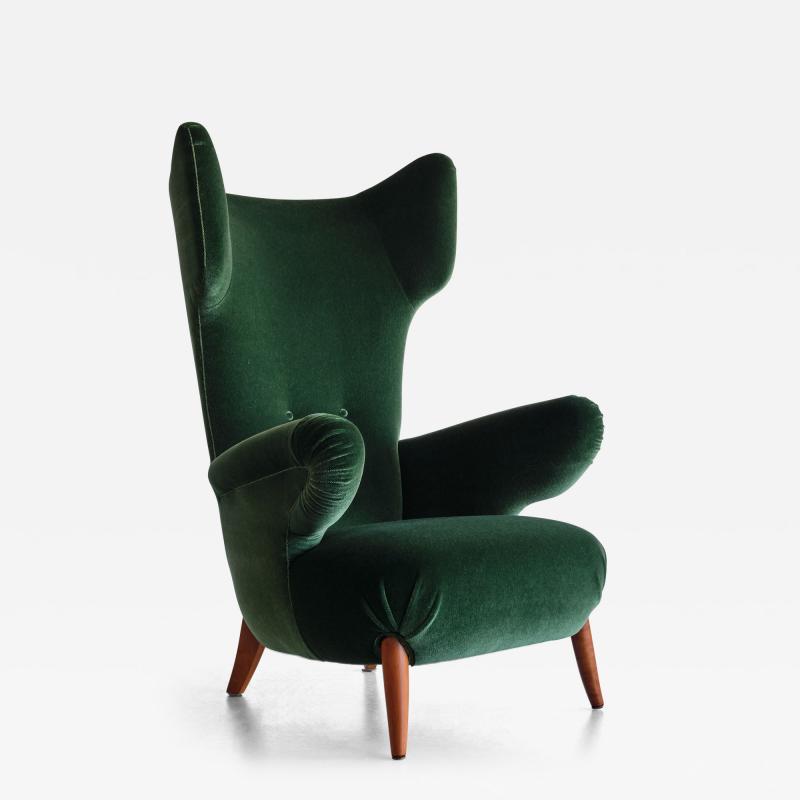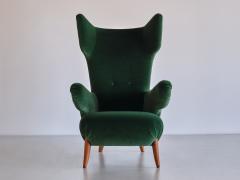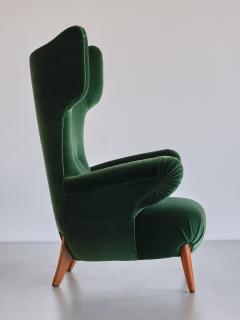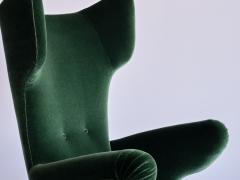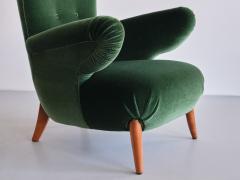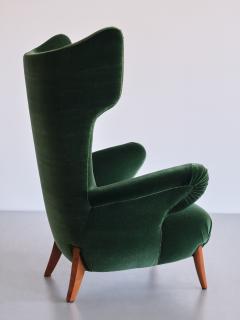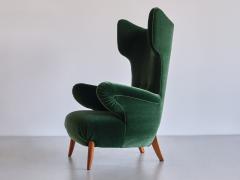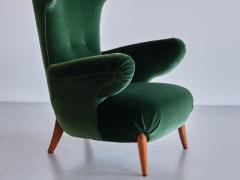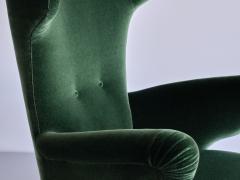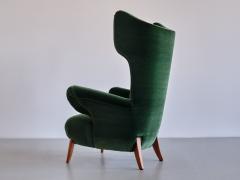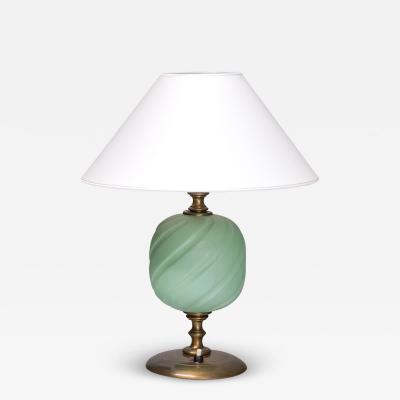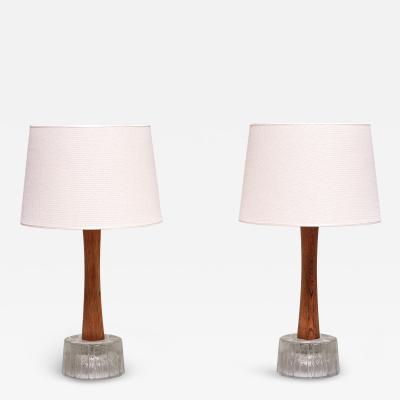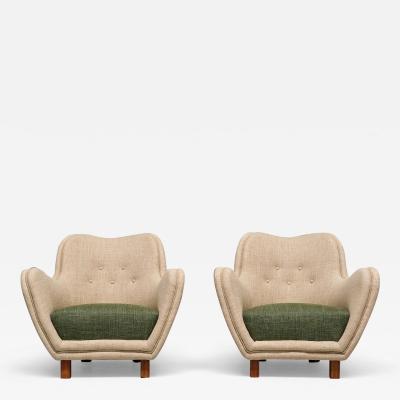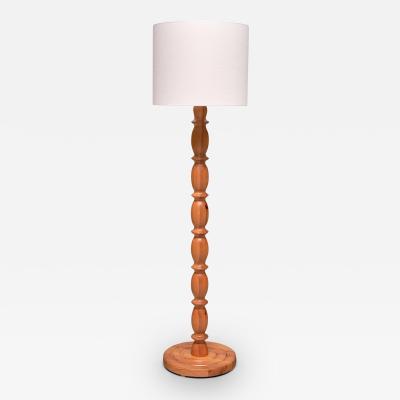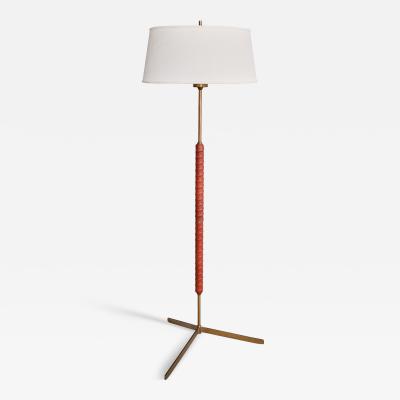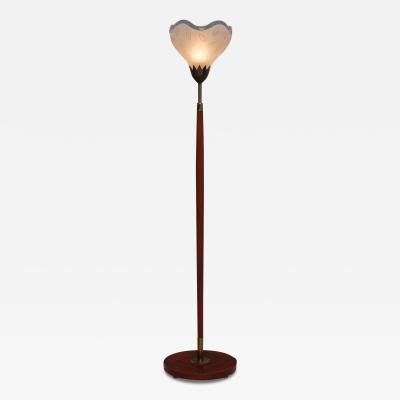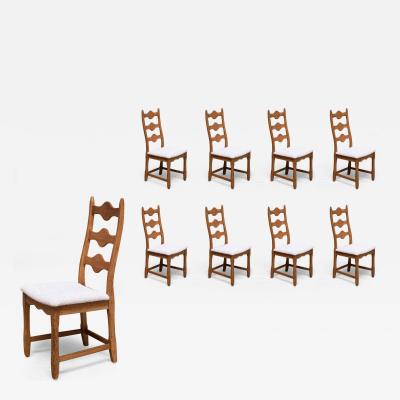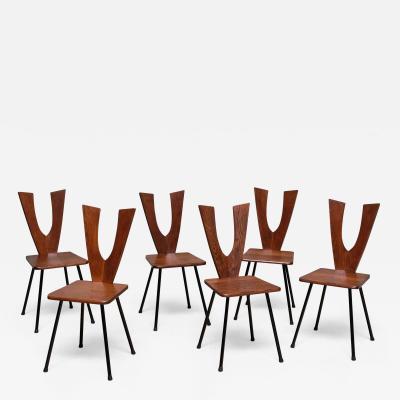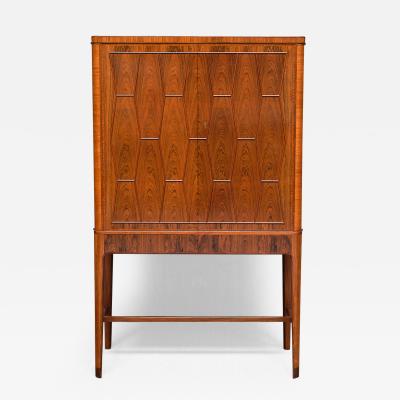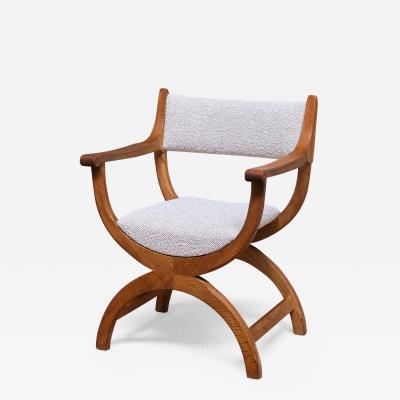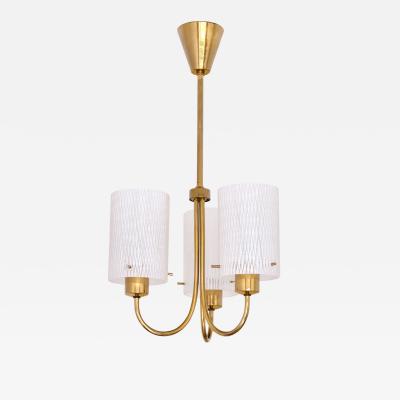This exceptional wingback chair was designed by Ottorino Aloisio in 1957. The chair was manufactured by the Turin workshop of Pier Luigi Colli. The organically curved lines of the winged back and the armrests create a striking and elegant presence, exemplary for the 1940s and 1950s Turin School style. Ottorino Aloisio made an expressive interpretation of the classical wingback chair, which resulted in a chair that is visually appealing from all sides. The generous proportions and the high back make this a very comfortable armchair. The tapered front legs and curved back legs are in solid walnut wood. The chair has been completely restored, reconditioned and reupholstered. The luxurious deep green mohair velvet is by Verel de Belval (Hermès textile division). This fabric of outstandingly high quality uses 100% mohair fleece from the very first shearing of Angora goats. There are only three mills in the world that can weave mohair yarn this fine. Coupled with a very close weave, the superfine, delicate fibres make for an incredibly soft, bright velvet. The silk trimmings (cord and gimp) are by Samuel & Sons Passementerie. The legs are in good, restored condition. Ottorino Aloisio (1902-1986) was an Italian architect. After his education at the faculty of Architecture in Rome, he became an active proponent of the Italian Movement for Rational Architecture (MIAR) alongside Gino Levi Montalcini and Giuseppe Pagano. Most of his architectural highlights were located in Turin, such as the "Ideal" cinema (1939), the "Gianduja" cinema (1946) and the Sipra-Cetra palazzo (1959). In 1952 he organized the first national conference on Alpine architecture, together with his fellow Turin-based architects Carlo Mollino and Marco Federico Roggero. Aloisio's furniture is marked by an extraordinary attention to craftsmanship and decoration. In the Postwar period the Colli company was the main manufacturer of his furniture. Together they collaborated on the construction, starting in 1938, of the Villa Maggia (furnished together with the Florentine Maurizio Tempestini) and on several interiors of important public buildings in Turin. Colli also manufactured furniture for the architect's own home located on via Susa.















